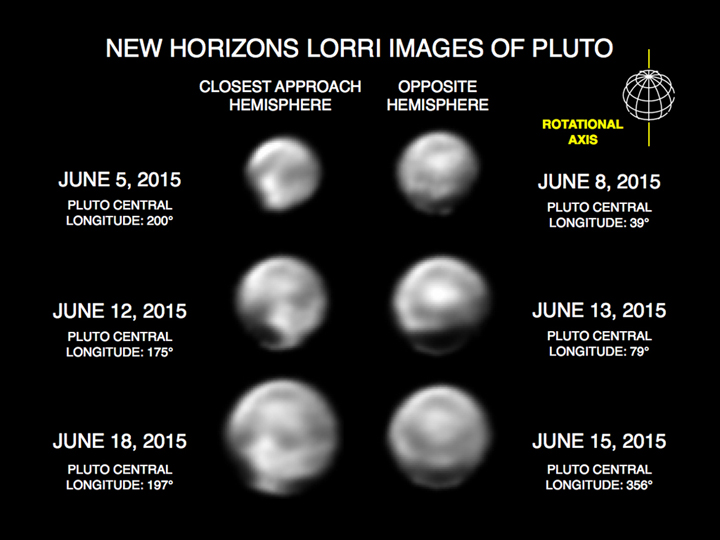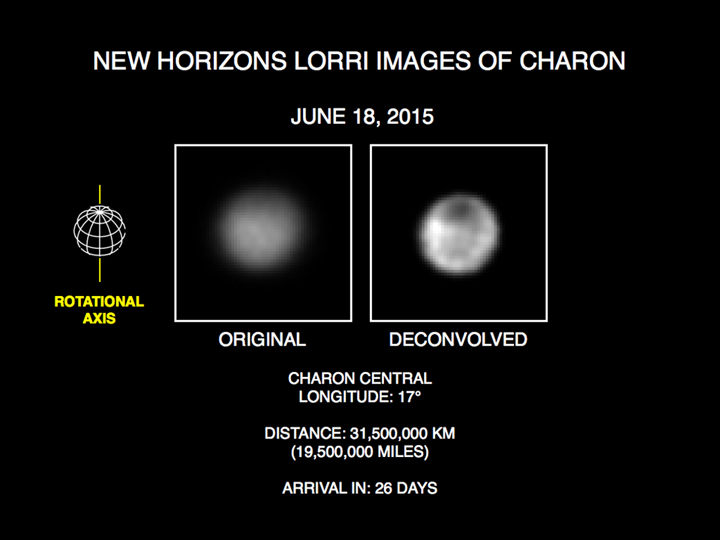TORONTO – Whether you think of Pluto as a full-fledged planet or a dwarf planet, there is no doubt that in the coming days, this little world will take centre stage across the globe.

NASA’s New Horizons spacecraft is hurtling an amazing 55,000 km/h towards Pluto and is already sending back new imagery of the icy world, intriguing astronomers as they attempt to learn more about a class of planet never before visited.
WATCH: New video highlights Pluto and Charon dance
The most recent images, taken by the spacecraft’s Long Range Reconnaissance Imager (LORRI) from May 19 to June 19, show the dance of Pluto and its largest moon, Charon.
READ MORE: Why you should get excited about the mission to Pluto

Get breaking National news
What’s most interesting is that Charon has a dark pole. This comes after earlier images revealed that Pluto has a bright pole, which astronomers believe to be a polar ice cap, similar to that found on Mars.
“This system is just amazing,” said Alan Stern, New Horizons Principal Investigator, from the Southwest Research Institute in Boulder, Colorado. “The science team is just ecstatic with what we see on Pluto’s close approach hemisphere: Every terrain type we see on the planet — including both the brightest and darkest surface areas — are represented there, it’s a wonderland!
“And about Charon — wow –I don’t think anyone expected Charon to reveal a mystery like dark terrains at its pole. Who ordered that?”
The mission to Pluto will help astronomers learn more about the early formation about our solar system, which seems to have three distinct class of worlds: rocky inner planets, the gaseous giant planets beyond our asteroid belt, and icy worlds beyond Neptune.
“The unambiguous detection of bright and dark terrain units on both Pluto and Charon indicates a wide range of diverse landscapes across the pair,” said science team co-investigator and imaging lead Jeff Moore, of NASA Ames Research Center. “For example, the bright fringe we see on Pluto may represent frost deposited from an evaporating polar cap, which is now in summer sun.”
New Horizons will make its closest flyby of Pluto on July 14. Due to its incredible speed — which was needed to reach the planet as it is 4,771,704,960 kilometres away — it will not orbit the small world.
If you want to see a great video on the exploration of our solar system, watch the video below.







Comments